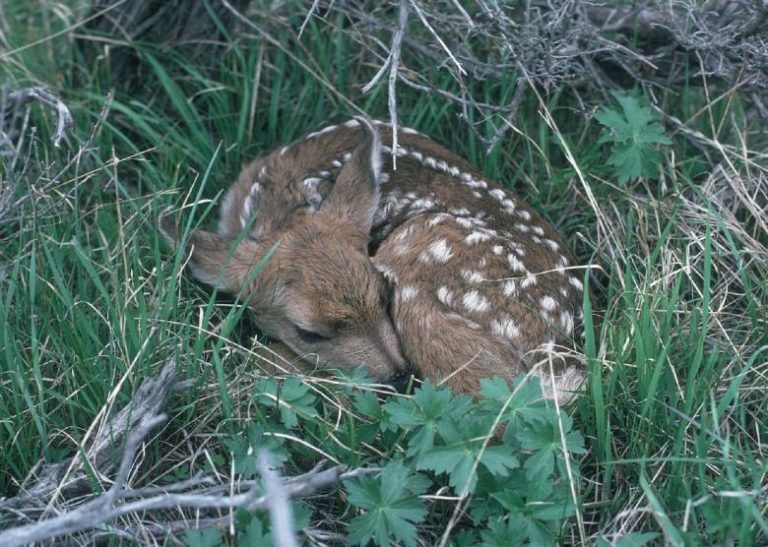Many new hunters are surprised at field-dressing the deer rather than bringing them to the table. However, professionals will say the opposite “Always prepare the best deer gutting knife and be ready to open the deer if needed.”
Why? On being knocked down by a shot, deers might die immediately, and their meat is quickly spoiled. For that, field dressing helps by cooling the carcass and slowing down the bacterial growth.
Moreover, gutting an adult deer is also helpful to remove the blood and unwanted parts like the stomach, organs, or even bone. It would significantly lighten the load to home!
This article will give a brief guide on choosing a gutting knife for deer and, more importantly, a list of 5 knives most used by hunters.
A Proper Gutting Knife for Deer Completes 80% of The Task, Why?
A knife is very convenient while hunting for its lightweight design and cutting performance.
When it comes to gutting an animal, a knife is comfortable holding and controlling to cut through the skin and access the internal organs. Plus, the blade is effortless to clean and maintain compared to an ax or saw. It means to rest assured about sanitation.
In the end – the faster you field dress the deer, the fresher its meat becomes.
People also want to know: What Is The Best Skinning Knife for Deer?
What Is The Best Deer Gutting Knife?
Knives for deer field-dressing are not made in the same way. Some key factors of the blade include:
- A blunt-ended or rounded-end blade to avoid damaging the meat or leather.
- An average length so that you can quickly maneuver with fewer slips and accidents.
- Stainless steel material is recommended because it is durable over time and easy to maintain.
- Comfortable and sturdy grip. It is suitable for reducing the slips because your hands get wet quickly while dressing the deer.
The winner of the round-up is Benchmade 15060-2 Grizzly Creek Knife This gutting knife for deer has two sharp blades in one to help you gut the deer at ease. Keep scrolling to get a detailed review.
VIEW BEST BUCK KNIVES ON AMAZON
In-depth Reviews on 5 Best Field-Dressing Knives
Buck Knives 0685BKG Bucklite Max II
Specifications:
| Type of blade | Blunt-ended blade |
| Blade material | S35VN Stainless Steel |
| Length | 4 Inches |
| Hand orientation | Left/Right |
| Hand material | Dynaflex Rubber |
Review:
This appealing piece from Buck Blades is the ideal choice once you account for quality and cost. It’s straightforward, feels excellent and secure on hand, and is made within the USA.
The 4-inch 420 high-carbon steel edge features a drop point. It’s 0.110 inches thick and features an intestine hook. The by and considerable length, on the other hand, is 8.875 inches. It weighs 4.7 ounces.
It contains a DynaFlex rubber handle but feels exceptionally steady in hand. The handle is dark, a bit like the polyester sheath that comes with the knife. The tang has the same length as the formed handle.
Buck blades are known for their solidness and hardness, although you’ll experience numerous edges with the same 420HC steel.
Their mystery? It is a heat treatmentSuppose. Their edges are known for predominant erosion resistance and are exceptionally simple to resharpen.
Gerber Freeman Guide Folding Knife
Specifications:
| Type of blade | Blunt-ended blade |
| Blade material | Stainless Steel |
| Length | 3.6 Inches |
| Hand orientation | Left/Right |
| Hand material | Textured Rubber |
Review:
This folding deer gutting knife for deer is one of the foremost helpful gutting blades for both gutting and cleaning and will cut a visit rope in a second.
The cut highlights a 3.60-inch drop point edge with a snare hook. The 5Cr15MoV steel edge is full-tang with a cord space. Since it’s fundamentally a collapsing version, it features a liner-lock instrument to shut the knife. A nylon calfskin sheath fair sweetens the deal.
If you’re somebody who likes to chase at far-off places and carry your pack all along. This compact tool can fit the interior of your rucksack or be connected to the circle of the belt as well. The handle of the cut is made of elastic with a surface that gives you an appropriate hold of it.
Benchmade – 15060-2 Grizzly Creek Knife
Specifications:
| Type of blade | Both Blunted-end and Rounded-end Blades |
| Blade material | Stainless Steel |
| Length | 7.8 Inches |
| Hand orientation | Left/Right |
| Hand material | Wood |
Review:
This excellent quality and alluring cut have a CPM-S30V stainless drop-point edge that folds absent into the handle. There’s moreover a foldaway intestine snare on the other side of the blade.
The overall knife weighs a fine of 4.76 ounces and is 7.8 inches long. When it’s closed, the by and considerable length is 4.34 inches. The edge holds its edge amazingly well. Its length is 3.50 inches, with a most extreme thickness of 0.124 inches.
The handle is extreme dymondwood. Benchmade moreover offers a lifetime honing and repair benefit to assist your cut final for lengthy.
Mossy Oak Fixed Blade Gut Hook Knife
Specifications:
| Type of blade | Blunt-end Blade |
| Blade material | Stainless Steel |
| Length | 9.5 Inches |
| Hand orientation | Left/Right |
| Hand material | Wood |
KA-BAR US Army Fighting/Utility Knife
Specifications:
| Type of blade | Rounded-end Blade |
| Blade material | Stainless Steel |
| Length | 9.5 Inches |
| Hand orientation | Left/Right |
| Hand material | Wood |
Review:
The dark-coated, flat ground edge comes to a bowie fashion clip point and is made out of 1095 Cro-Van steel. Plain and serrated edges are accessible based on your inclination. Edge maintenance and ease of honing, as a rule, have an inverse relationship, but they’ve done a pleasant job of strolling that tightrope here.
Additionally, a 2.5 inch more full is built into the spine side of the edge to keep weight down to what feels as light as 11.2 ounces. Edge thickness comes in at a culmination of .17 inches for the aiming utilize. It’s solid enough to stack firewood, available ammunition cans and cut wire without including weight to a trooper that has to be versatile to remain alive.
Initially, the swedge of the edge was transported out honed from the plant, but twofold edged blades are grown.
How about The Other 20% When It Comes to Deer Gutting Knife?
Now you might already pick up the best deer gutting knife. The next step is to discuss how to use it properly.
Your cutting techniques will affect the meat quality and your safety. Take notes of the following seven steps of gutting deers, referring to the guide of Kristy Titus and our experience.
Step 1: Cut a coring ring around the deer’s anus
Get started by kneeling behind the side or back of the animal so that you can easily cut a several-inch coring ring through the skin and around the anus.
A tip is to slide the knife into the position between the retrace and the pelvic canal, where you can slice attached membranes. You should be cautious not to punch the colon.
Step 2: Reposition the animal belly up
You will want to elevate the head while having the belly up.
It is helpful to borrow a hand from your fellow to spread the hind legs apart. Otherwise, find a slope and secure the carcass with rock/wood wedging under the ribcage. Tie each portion to a tree, nearby – if any.
Step 3: Make your first “V” cut between rear legs
Grab the skin between the deer’s hind legs – above the testicle and below the milk sac, to form a “V.” Cut a slit through that part.
Step 4: Cut up the midline
From the initial incision to the breastbone, cut the belly open with a gut hook. You can use your fingers instead of the hook as well. Hold the tool with its face up in order not to puncture organs.
Step 5: Cut up the diaphragm
Move on the diaphragm – the thin membrane separating the abdomen from the chest. Cut it from the wall cavity along to the spine.
Step 6: Cut the windpipe and free the entrails.
Hold the knife with your hand and use the other to grab the windpipe. Carefully reach up to locate the pine so that you can sever it to get rid of the entrails. Those parts do not come out quickly, though. You had better pull on them.
Step 7: Drain the blood
You can turn the deer over, having the open cavity against the field then. Avoid a place with dirt, leaves, or sticks if you do not want to spoil the meat.
Final Thought
Opening up a deer for the first time seems intimidating and challenging until you try using the best deer gutting knife – feel free to pick up one from the review list above. More importantly, you must be careful while cutting because the blade is often highly sharp!
















